Dual BA Student Helms Innovative Project Illuminating Migrant Experiences
Joseph Aimard '24GS is currently running a participatory photography program aimed at illuminating the experience of migrants in Paris. He shares insights into creating, getting funding for, and managing such an ambitious and meaningful endeavor.
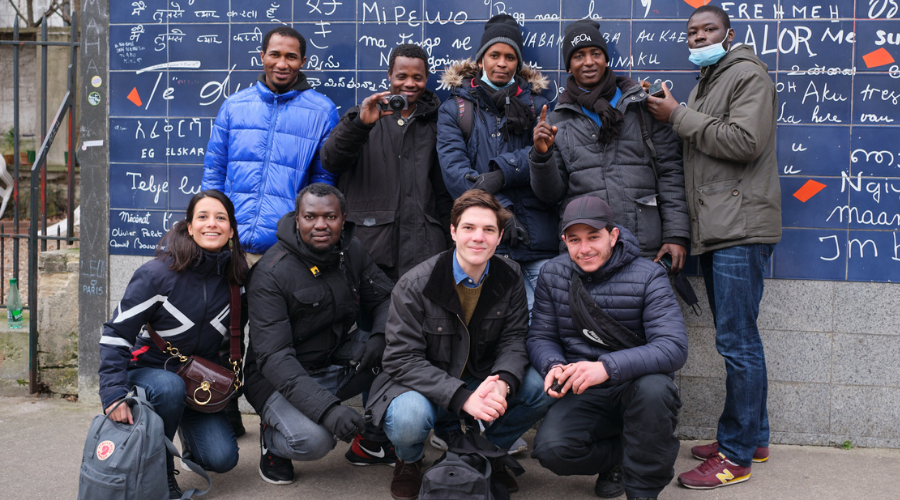
Dual BA student Joseph Aimard '24GS, who is studying Political Science, is currently taking a gap year to run a participatory photography program illuminating the experience of migrants in Paris with support from an Ella Lyman Cabot Trust grant. Aimard shares the process behind independently conceptualizing, creating, and running a major project, what impact he hopes to have with this work, and how these experiences compliment his long term educational goals.
Tell us more about the photography project you’re working on in Paris. What has the experience been like so far?
This project, tentatively titled “Within and Without: Gazing Through the Migrant’s Lens,” uses participatory photography to shed light on migrants’ experience of living in Paris and, more broadly, in France and Europe. In doing so, it seeks to fulfill two objectives: to give a voice to migrants by creating a haven for socialization and artistic growth, and to sensitize Parisians to migrants’ outlooks on exile and rootlessness thanks to the exhibition and publication of a written volume at the end of the project.
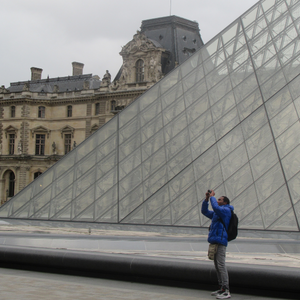
Preparation for the project began in March. Over the summer, I deepened contacts I had made with NGOs and, since September, spent time volunteering in a welcome center for migrants. Photography workshops began in January. Since then, there have been two workshops every week. The workshops will continue throughout February, and I am hoping that the exhibition will take place in April or May.
The workshops train the participants as photographers. A professional photographer attends our workshops to offer guidance, and a photo agency is assisting us in the project’s artistic development by helping to find central themes to explore in the participants’ photographic work. During the workshops, when we go on excursions to famous landmarks in Paris or when we review the migrants’ pictures as a group, I am with the migrants. During the rest of the week, when I am not with them, they keep a camera to take pictures of scenes from their daily life. The idea is essentially that they can learn photography during our workshops and that they can then use those skills outside of the workshops, in their day-to-day activities.
"These individuals’ youth is squandered by ineffective immigration policies. This highlights the inherent injustice of a world where some have a passport that allows for international mobility when others have a passport that only curbs the breadth of their opportunities."
So far, the experience has been enriching and deeply moving. Prior to launching the project, when I was volunteering in the welcome center for migrants where some of our workshops now take place, I was confronted with the painful reality of an immigrant’s life in France: a life marked by deprivation and instability, by alienation and insidious loneliness, by years of waiting and weariness for the outcome of legal proceedings that often turn a blind eye to human decency. These individuals’ youth is squandered by ineffective immigration policies. This highlights the inherent injustice of a world where some have a passport that allows for international mobility when others have a passport that only curbs the breadth of their opportunities.
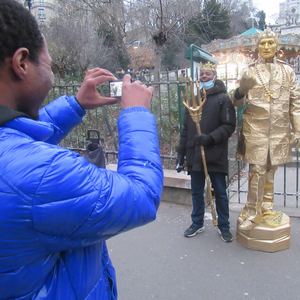
In the face of these hardships, it is rewarding to share moments of laughter and hopefulness with the project’s participants. Seeing them roam around Montmartre and the Louvre with a camera, joking as they take pictures of affluent tourists and rushed Parisians, helps, for a short time, to alleviate the weight of uprooting. Whenever this occurs, I feel that this project is, at least in part, a success.
What’s been your biggest takeaway (or challenge) from this experience?
The most challenging part of this experience is also what makes it so formative. Carrying out this kind of project independently is daunting and demanding. In contrast to being a student or an employee, there are no instructions on how to achieve the project’s desired results, nor is there an institutional safety net if things go wrong. In effect, the project’s development depends for the most part on me. Coming to terms with this autonomy helps me to be less distraught at the prospect of rejection.
"The most challenging part of this experience is also what makes it so formative. Carrying out this kind of project independently is daunting and demanding."
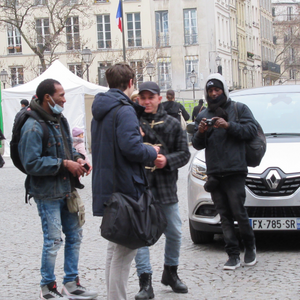
Many of the artists and NGOs whom I contacted never got back to me, but those who did and who decided to support the project have played an instrumental role in making it possible. Likewise, coordinating this project—with its wide diversity of actors involved—compels me to be more adaptable and to better tolerate uncertainty. How this project unfolds remains in doubt. As burdensome as this can sometimes be, it is also what I find most stimulating and exciting!
How does this opportunity fit in with your goals and plans both during and following the Dual BA Program?
This opportunity is consistent with my wish to delve into questions surrounding global justice and inequality, both during and following the Dual BA Program. Migration and forced displacement encapsulate most contemporary forms of injustice—whether it be economic, ethnic, gender, religious, etc.—and migrants are often at the crossroads of these inequities when they seek asylum in a host country.
Being the descendant of Polish Catholic immigrants in the U.S. and Algerian Jews in France, and as an expatriate child who was born in Venezuela and grew up in Scotland and France, I sensed the unfairness of borders thanks to my family and personal history. At Columbia, I hope to further explore the topic of migration—and global justice in a general sense—through my classes in the social sciences and humanities. Gaining a better theoretical understanding of these issues is essential to complement the practical experience of leading this project. Beyond the Dual BA Program, I envision myself pursuing graduate studies in international development, with the objective of hopefully working in that field.
You received a grant from the Ella Lyman Cabot Trust to assist with funding while working on this project. How did you find out about this funding opportunity and what was the application process like?
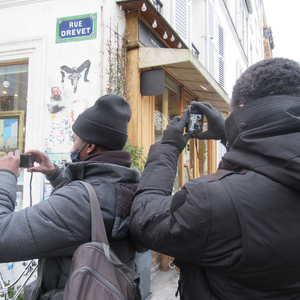
It was on the Columbia GS Fellowship website that I found out about the Ella Lyman Cabot Trust. This funding opportunity immediately caught my attention: no other fellowship seemed to offer the same degree of freedom and potential for innovation. I quickly realized that it would be the perfect source of funding for my project.
Overall, the application process was rigorous and thought-provoking, which allowed me to precisely define and spell out what I wanted the project to achieve. Divided into two steps, the application process consisted in a preliminary project proposal and, upon the trustees’ request, a formal project proposal that included proposal narratives, letters of reference, a resume, and a formal budget. I remain particularly indebted to Dean Novarr for his unabated guidance and insight throughout the application process. Without him, this project would have been confined to my imagination.
What advice would you give to other students who are interested in opportunities like this?
I would first recommend taking full advantage of the fellowship support within GS. The resources and counsel available to students help to facilitate the stressful task of submitting a grant proposal. Starting early is also crucial. It takes time to clearly establish the aims of a project, let alone to convince others of their viability. Similarly, it is important to work out what exactly this project means to you and how accomplishing it would be valuable to those whom it seeks to help. Keeping this in mind throughout is what makes it worthwhile. Otherwise, it can be hard to stay motivated if there is no structure or organization steering day-to-day activities.
"I would advise to try to be undeterred by obstacles along the way. Attempting to create something new as an undergraduate student—or at any stage in life for that matter—is not an effortless endeavor…[But] difficulties encountered and overcome are also what make a project meaningful!"
Above all, I would advise to try to be undeterred by obstacles along the way. Attempting to create something new as an undergraduate student—or at any stage in life for that matter—is not an effortless endeavor and often involves drawbacks. At a young age and with limited professional experience, having to assure foundations, non-governmental organizations, artistic structures, and the project’s participants of your legitimacy to direct such a project is strenuous and sometimes exhausting. This should not be a source of discouragement, nonetheless. Difficulties encountered and overcome are also what make a project meaningful!
